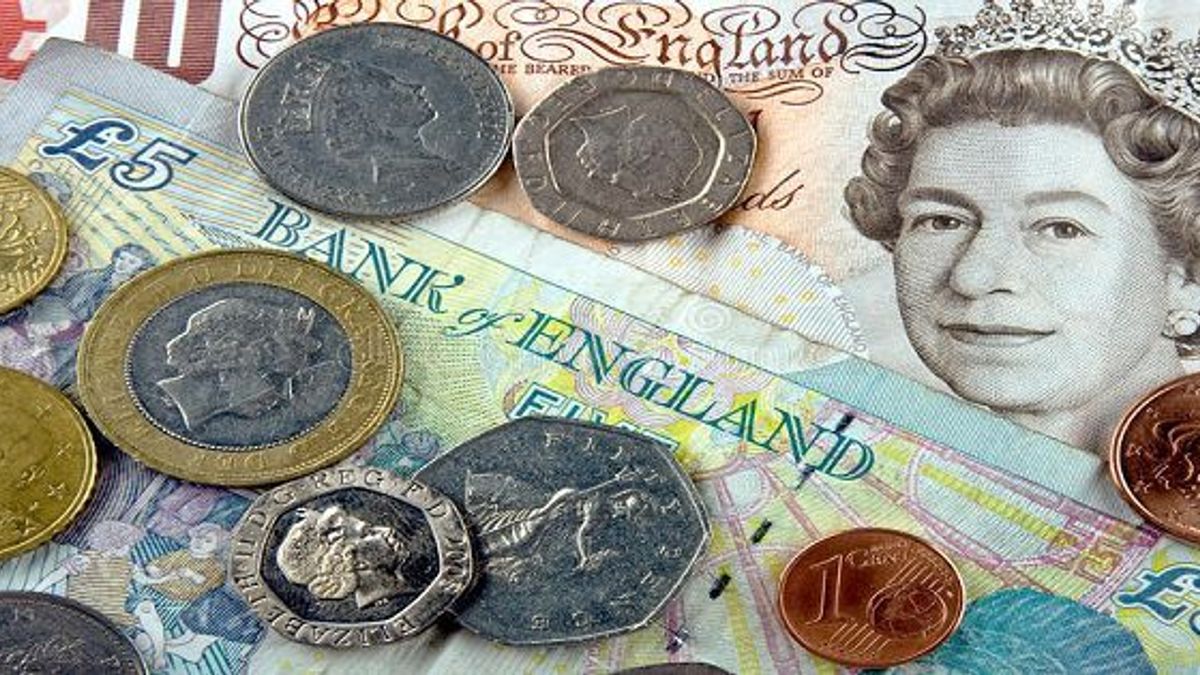- British Currency Denominations Bob
- British Currency Coins
- Understanding British Money: What's A Quid? A Shilling? - I ...
- British Currency
- British Money And UK Currency - Money - Visitlondon.com

This Free Currency Exchange Rates Calculator helps you convert British Pound to US Dollar from any amount. Pound sterling (symbol: £; ISO code: GBP), known in some contexts simply as the pound or sterling, is the official currency of the United Kingdom, Jersey, Guernsey, the Isle of Man, Gibraltar, South Georgia and the South Sandwich Islands, the British Antarctic Territory, and Tristan da Cunha. Our currency converter calculator will convert your money based on current values from around the world. GBP - British Pound. Our currency rankings show that the most popular United Kingdom Pound exchange rate is the GBP to EUR rate. The currency code for Pounds is GBP, and the currency symbol is £. More British Pound info. Starting in 1662, hammered coins stopped being produced and all British coins were machine made (milled). Milled British coins price guide and values; Pre-decimal coinage - 1816 to 1967. Prior to decimalisation the pound was divided into 20 shillings, each of 12 (old) pence; thus, there were 240 (old) pence to the pound.
United Kingdom coins price guide and values

Early milled coinage - 1662 to 1813
Starting in 1662, hammered coins stopped being produced and all British coins were machine made (milled).
Pre-decimal coinage - 1816 to 1967

Prior to decimalisation the pound was divided into 20 shillings, each of 12 (old) pence; thus, there were 240 (old) pence to the pound.
British Currency Denominations Bob
Decimal coinage - 1968 to 2021
Since decimalisation, on 15 February 1971, the pound has been divided into 100 (new) pence. The value of the pound itself was unchanged by decimalisation. The new coins were initially marked with the words NEW PENNY or NEW PENCE. The word 'new' was dropped in 1982. The first decimal coins were circulated in 1968.
View the 250 last updates of British coins values.
In the British system, there are so many different denominations andnames for coins that one could easily become confused as to their relativevalues. This page hopes to clarify some of the more basic relationships.
The smallest denomination is a farthing. The next larger unit is a penny, or pence in the plural. Situated between these two units of currency is the most common small change coin of the colonial period, a halfpenny. Two farthings equals a halfpenny and two halfpence equal one penny.
The shilling, equal to twelve pence, becomes the common base for thelarger denominations. A crown equals five shillings. Situated between these two units is the half crown equal to two shillings and six pence. During colonial times the value of an item was often expressed in crowns.
In the Seventeenth century (less so in the Eighteenth century) the British refered to a mark. This did not represent a coin but rather it was a unit of account equal to 13s4d (160d) or two-thirds of a Unite Laurel Pound, which was valued at 20s (240d).

British Currency Coins
The next higher basic unit is the pound, in later times also called aquid, which equals twenty shillings (or four crowns). A gold sovereign is equivalent to a pound, while a gold guinea is worth one shilling more (twenty-one shillings).
Understanding British Money: What's A Quid? A Shilling? - I ...
Three of these denominations may be abbreviated to make the notationof monetary amounts simpler. Pounds may be expressed using the symbol '£'derived from the word 'libra' which is Latin for pound. Shillings areabbreviated with an 's,' (which comes from the roman coin the solidus which equalled twelve denarii) while pence are shown with a 'd' for denarius (which was a small denomination roman coin). For example, three pounds six shillings and three pence would be noted as £3 6s3d. Fractions of 1/2d and 1/4d were used to designate a halfpenny and a farthing.
The following chart shows the relationships in numeric form:
1 Gold Guinea = £1 1s = 21s = 252d
1 Gold Sovereign = £1 = 20s = 240d
1 Pound = £1 = 20s = 240d
1 Mark = 13s4d = 160d
1 Crown = 5s = 60d
1 Shilling = 1s = 12d
1 Sixpence = 6d
1 Threepence = 3d
1 Penny = 1d
1 Halfpence = 1/2d = 2 farthings
1 Farthing = 1/4d
| 'ALT='->' BORDER='0' ALIGN='BOTTOM' NATURALSIZEFLAG='3'> | ||
| British Copper Introduction | Section Contents | British Silver Introduction |

British Currency
British Money And UK Currency - Money - Visitlondon.com
For viewing tips and information on optimal computer settings clickhere. For questions or comments contact Louis Jordan by: |